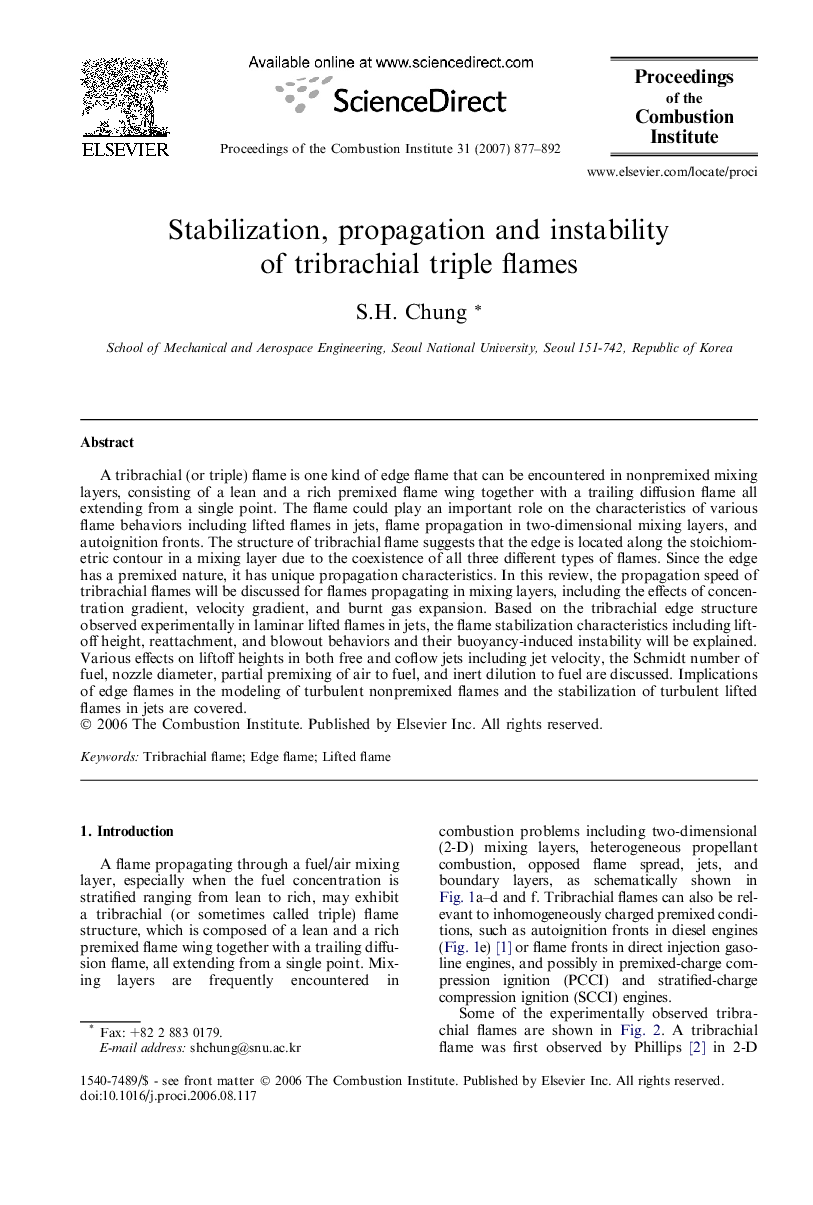| Article ID | Journal | Published Year | Pages | File Type |
|---|---|---|---|---|
| 240797 | Proceedings of the Combustion Institute | 2007 | 16 Pages |
A tribrachial (or triple) flame is one kind of edge flame that can be encountered in nonpremixed mixing layers, consisting of a lean and a rich premixed flame wing together with a trailing diffusion flame all extending from a single point. The flame could play an important role on the characteristics of various flame behaviors including lifted flames in jets, flame propagation in two-dimensional mixing layers, and autoignition fronts. The structure of tribrachial flame suggests that the edge is located along the stoichiometric contour in a mixing layer due to the coexistence of all three different types of flames. Since the edge has a premixed nature, it has unique propagation characteristics. In this review, the propagation speed of tribrachial flames will be discussed for flames propagating in mixing layers, including the effects of concentration gradient, velocity gradient, and burnt gas expansion. Based on the tribrachial edge structure observed experimentally in laminar lifted flames in jets, the flame stabilization characteristics including liftoff height, reattachment, and blowout behaviors and their buoyancy-induced instability will be explained. Various effects on liftoff heights in both free and coflow jets including jet velocity, the Schmidt number of fuel, nozzle diameter, partial premixing of air to fuel, and inert dilution to fuel are discussed. Implications of edge flames in the modeling of turbulent nonpremixed flames and the stabilization of turbulent lifted flames in jets are covered.
